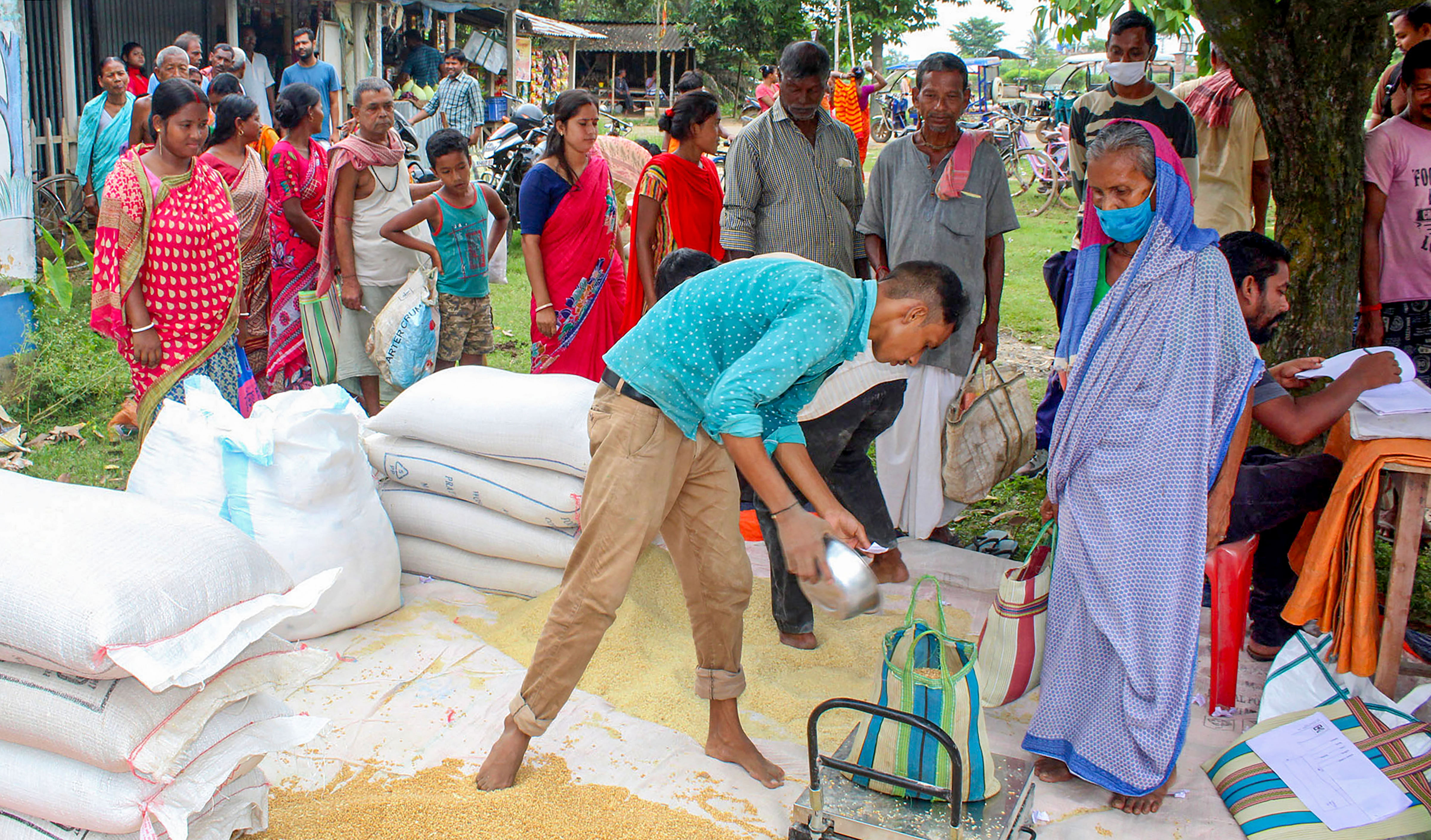
Representative image showing NFSA beneficiaries receiving rations.
Credit: PTI File Photo
With five state Assembly elections and the Lok Sabha polls fast approaching, Prime Minister Narendra Modi, perhaps expectedly, has announced the extension of the Pradhan Mantri Garib Kalyan Anna Yojana (PMGKAY) free ration scheme for five more years.
The announcement was made over the course of weekend at poll rallies in Chhattisgarh and Madhya Pradesh, wherein the PM said, "Under the PMGKAY, free ration has been provided to the poor in the country for the past three years. Even though the one-month free ration scheme is coming to an end, Modi’s commitment is to extend it for the next five years. For the next five years, the stoves of 80 crore people in my country will keep burning. This is Modi’s guarantee."
In light of PM Modi's announcement, we take a brief look at the scheme, its scope and costs associated.
What is the PMGKAY?
Introduced in 2020 during the Covid-19 pandemic, the PMGKAY was launched with the aim of providing 5 kg of free foodgrains to eligible ration card holders under the National Food Security Act, 2013.
While the NFSA itself was introduced by the earlier UPA government, the two were merged in January 2023, following extensions to the PMGKAY scheme in the run up to the Himachal Pradesh and Gujarat Assembly elections last year.
Following the aforementioned extension, the scheme was slated to be in place up until December 2023, but has been extended again now for another five years.
Who are covered under PMGKAY?
The PMGKAY covers two types of ration card holders under the NFSA—those falling under the Antyodaya Anna Yojana (AAY) and Priority Households (PHH), both of which were integrated with the PMGKAY in January this year.
While AAY and PHH beneficiaries were entitled to 35 kg of free foodgrains (regardless of the number of family members) and 5 kg of free foodgrain for each family member respectively, the PMGKAY, when it was launched, offered free rations in addition to the aforementioned allotments.
As of January 2023, there were over 81.35 crore beneficiaries of the PMGKAY scheme, equivalent to over two-thirds of India's population.
Allocations under and cost of PMGKAY
In January, the merger of NFSA with PMGKAY eliminated additional provisions introduced during the Covid-19 pandemic while providing all rations for AAY and PHH beneficiaries for free.
This, incidentally, aslo coincided with dwindling stocks of foograins in the central pool, and according to a report by The Indian Express, saved the Centre an estimated Rs 15,000 crore every month.
As far as subsidies go, the Centre had budgeted Rs 2 lakh crore this fiscal for food subsidies.
That being said, a look at the Centre's overall on spend on food subsidies since 2020 shows that the cost of the scheme is on the decline, having fallen from Rs 5.41 lakh crore in 2020-21 to Rs 1.97 lakh crore in 2023-24.
In other words, data points towards a 31 per cent decline in the 2023-24 Budgeted Estimate in comparison with the 2022-23 Revised Estimate.